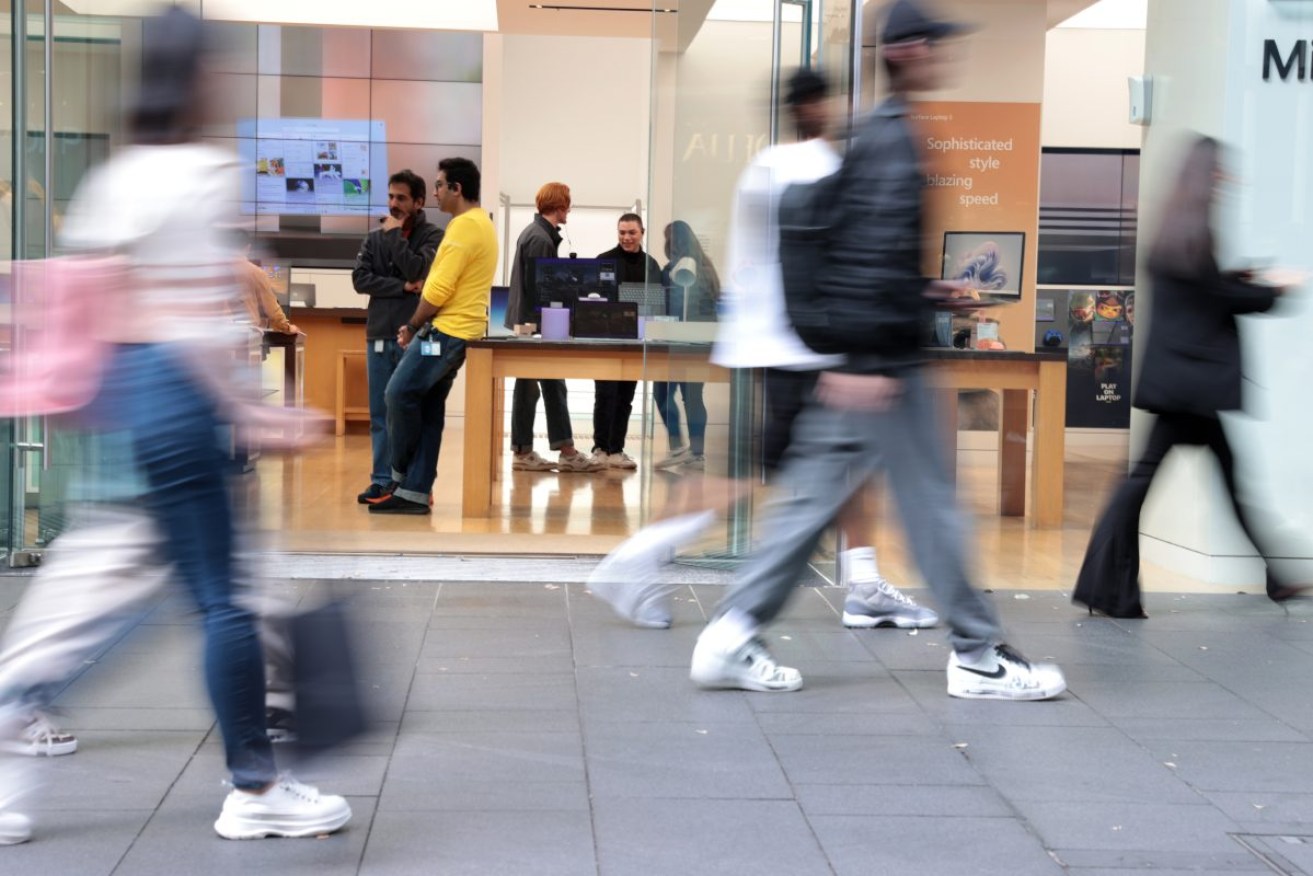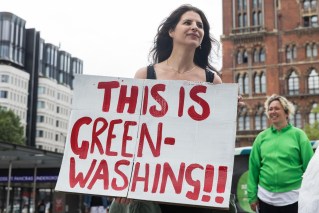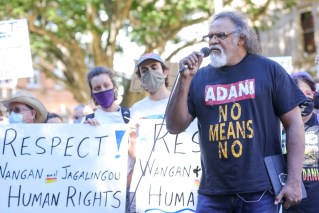Taking the pulse of the nation: Check-ups will reveal spending, investment outlook
Australia’s inflationary pulse will be taken this week, with check-ups on spending activity, the property market and business investment also on the calendar.

Shoppers walk past a retail store in Sydney, Thursday, August 24, 2023 (AAP Image/Jane Dempster) NO ARCHIVING
The economic health assessments will start on Wednesday with the monthly consumer price index for January.
While missing some of the price moves captured in the full quarterly version, the Australian Bureau of Statistics’ monthly index will still be scanned for evidence of easing price pressures ahead of the Reserve Bank’s interest rate meeting in March.
Consumer price growth has been easing more quickly than the RBA anticipated, although the central bank still expects it to take until 2025 to be back within its target range of two to three per cent.
In the 12 months to December, the consumer price index rose 3.4 per cent, well down from the 4.3 per cent growth through to November.
Commonwealth Bank expects the monthly indicator to tick higher to 3.5 per cent growth in the 12 months to January, with a spike in international holiday travel and accommodation inflation last summer influencing the annual rate.
Stephen Wu, an economist at the bank, expects housing to remain the key driver of inflation in the month.
“Record low vacancy rates are keeping rents inflation elevated, with the impact from the increase in rental assistance having fully faded since November last year,” he said.
Homes in a new estate.
Low vacancy rates are keeping rent inflation elevated, while construction costs remain high. (Darren England/AAP PHOTOS)
Labour shortages are also keeping construction costs high.
Retail sales data lined up for Thursday will shed some light on the all-important consumer sector, which has been battered by a series of interest rate rises and rising living costs.
The RBA has been monitoring consumers closely as a source of uncertainty for its plan to bring inflation back to its target range while keeping the economy growing.
The statistics bureau will on Wednesday release data on completed construction work, and on Thursday an update on past and expected business spending.
Both sets of figures will inform the economic growth equation for the December quarter that is due in the following week.
On Friday, private real estate data firm CoreLogic will release its home value index for February.
Housing prices grew steadily in 2023, although the pace of increase has slackened in recent months.
The federal government’s tax amendments, which would give a bigger cut to people earning less than $150,000 and a smaller cut to those earning more, will be introduced to the Senate this week after passing the lower house earlier in February.
On the stock market, the benchmark S&P/ASX200 index on Friday finished up 32.4 points, or 0.43 per cent, to 7643.6, while the broader All Ordinaries added 33.9 points, or 0.43 per cent, to 7899.2.
For the week the ASX200 finished down 0.2 per cent, basically reversing its gains from the week before, as a global AI-fuelled rally in equities bypassed Australian shores.












